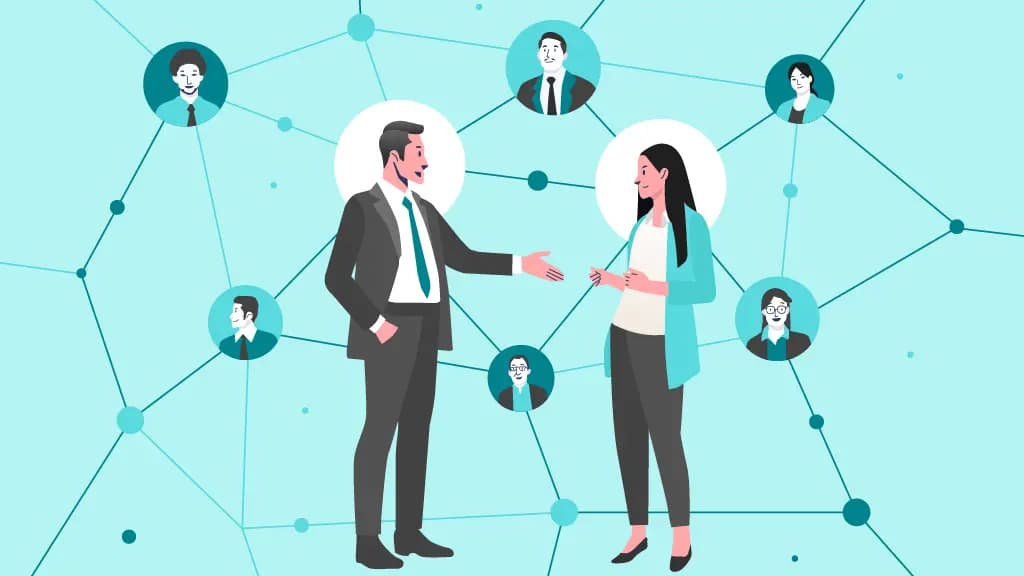How AI enhances Internal Communication to Boost Employee Engagement

Kartikay Kashyap
August 1, 2025

How AI is Transforming Communication
1. Automation and Efficiency in Communication: AI automates routine communication tasks by handling repetitive inquiries through chatbots, scheduling meetings with intelligent assistants, and generating reports using natural language processing. This automation reduces manual workload, accelerates information dissemination, and ensures consistent messaging, enhancing overall efficiency and allowing employees to focus on more strategic activities.
2. Personalization of Messages: AI personalizes internal communication by analyzing employee preferences and behavior and tailoring messages to individual needs. This customization ensures relevant information is delivered in preferred formats, improving engagement and efficiency. AI fosters better understanding and more effective organizational communication by adapting content and timing to suit each employee.
3. Real-time Communication and Feedback: AI enhances internal communication by enabling immediate responses through chatbots and virtual assistants, facilitating real-time interactions. This instant feedback accelerates decision-making, resolves queries promptly, and keeps workflows uninterrupted, leading to more dynamic and agile organizational operations. Consequently, AI fosters a more responsive and efficient work environment.
Benefits of AI in Internal Communication
1. Improves Employee Engagement: Effective internal communication enhances employee engagement by fostering clarity, trust, and collaboration. It aligns employees with organizational goals, builds a sense of belonging, and empowers them with information and feedback. This open dialogue and transparency lead to increased motivation, productivity, and a more connected workforce.
2. Improves Collaboration across Teams: Internal communication enhances collaboration by facilitating knowledge sharing, promoting transparency, and improving coordination. It ensures all members are aligned with goals, fosters trust, and streamlines project management. Clear communication helps build relationships and resolve conflicts, enabling teams to work together more effectively, even in remote or hybrid settings.
3. Increased Accessibility and Inclusivity: Internal communication improves accessibility and inclusivity by ensuring information is readily available to all employees, regardless of location or role. It provides diverse communication channels that cater to different needs, fosters an inclusive environment where everyone’s voice is heard, and enables equal participation in organizational initiatives and decision-making.
Implementing AI in Internal Communication
Choosing the right tool
Integrating AI with existing technologies
Training and onboarding
Practical training and onboarding are crucial when implementing AI in internal communication. Employees need comprehensive guidance on how to use AI tools, understand their benefits, and integrate them into daily workflows. Proper training ensures smooth adoption, minimizes resistance, and empowers teams to leverage AI for enhanced organizational communication and collaboration.
Communicating AI Optimism with Employees
As AI continues to enhance the workplace, one thing is certain: helping your staff understand and embrace its potential is critical to success. Open, candid discussions about the role of AI may pique interest, allay fears, and foster an environment conducive to innovation. Let’s look at how HR professionals may bring AI optimism to life in their workplaces.
Educate and Inform
When it comes to AI, knowledge is power. For many employees, AI can feel like a mystery or even a threat. Simplifying the concept and making it relatable is the first step in building trust and excitement. When employees understand AI’s benefits in real terms, they’ll be more likely to get on board.
- Explain AI in Action:
Start with the basics. What is AI? How does it work? And most importantly, how will it help us? Use simple language and examples from real-world scenarios to make AI feel approachable. For instance, share how chatbots are improving customer interactions or how AI tools are helping teams make faster, data-driven decisions. - Share Success Stories:
Bring AI to life with real success stories. Talk about companies that have embraced AI and seen great results—like reduced workloads, increased efficiency, or exciting new opportunities for employees. - Make It Personal:
Show your team how AI connects to their day-to-day tasks. Whether it’s automating data entry or providing better insights for decision-making, help them see the personal value AI brings to their roles.
Focus on Opportunities
AI is here to aid, not replace. Shifting the narrative from fear to opportunity can make a significant difference in how employees see it. With the right focus, employees see AI as a tool for growth, they will be more eager to explore its potential.
- AI as a Partner:
Emphasize that AI isn’t about taking jobs—it’s about making work better. AI handles repetitive tasks so employees can focus on the creative and strategic work they love. Think of it as a teammate, not a competitor. - More Time for What Matters:
With AI managing routine tasks, your team has more time to tackle meaningful projects. Highlight how this shift can lead to more fulfilling roles, stronger connections with coworkers, and even career advancement. - Opening Doors:
Discuss how AI can create new prospects for growth. AI is setting the path for the future, whether through the acquisition of new skills or the pursuit of fascinating projects.
Address Concerns
Let’s face it: change can be scary. Addressing concerns about AI directly shows your team that their worries are heard and valued. Employees feel supported, they’re more likely to embrace change with confidence.
- Listen and Reassure:
Start by acknowledging their fears. Maybe it’s about job security or keeping up with new technology. Whatever it is, let them know their concerns matter and share how the company is planning to support them. - Commit to Growth:
Talk about upskilling and reskilling opportunities. Let employees know you’re investing in their future by offering training programs such as coding workshops, leadership courses, and AI-specific skill-building sessions. - Maintain transparency:
Keep lines of communication open. Provide updates on AI adoption, what it means for the team, and how it is progressing. Being forthright increases trust and decreases ambiguity.
Encourage Participation
The best way to get employees excited about AI is to let them be part of the journey. Involving your team generates a sense of responsibility while decreasing opposition. Once employees feel included, they’re more likely to see AI as something they can champion—not just something being handed to them.
- Form Collaborative Teams:
Invite employees from different departments to join AI task forces. They can help explore practical applications, ensuring AI solutions meet real needs. - Ask for Feedback:
Create opportunities for employees to share their thoughts and ideas about AI. Whether through surveys, workshops, or one-on-one chats, showing that their input matters builds trust. - Pilot New Tools:
Let employees test AI tools in pilot programs. It’s a great way to familiarize them with the technology while gathering valuable insights to fine-tune your approach.
By educating your team, focusing on opportunities, addressing their concerns, and inviting them to be part of the journey, you can build a workplace where AI feels like a partner in success. When employees feel empowered and excited about AI, it’s not just technology that evolves—it’s your entire organization.
How to Use AI to Enhance Employee Engagement
As many areas are being explored where AI can assist HR professionals in providing a better employee experience, the ability to create compelling content using generative AI is emerging as one of the most promising.
1. Employee Engagement Surveys: Many progressive companies conduct employee engagement surveys at least once a year to gauge the pulse of their workforce. Many companies are using generative AI techniques to build these surveys from scratch. Building a comprehensive survey with a relevant questionnaire was done manually, but generative AI has made this easier for HR professionals.
2. AI Chatbots: AI chatbots have been around for a while now. Many companies are using AI chatbots for better employee communication. For instance, AdvantageClub.ai has also launched an AI chatbot called ADVA for its users. Such chatbots give employees nudges to appreciate their peers when they achieve a milestone, such as a work anniversary. Moreover, chatbots are also being used to attend to employee queries and grievances.
3. Personalization: AI algorithms can also segment employees by location, role, and seniority. This allows companies to automate targeted employee communications through newsletters and emailers.
4. Data Insights: AI’s ability to analyze enormous amounts of data in less time allows companies to build targeted and personalized employee engagement programs related to Rewards and Recognition. For instance, the AdvantageClub.ai platform has AI-enabled capabilities to design rewards and perks according to an employee’s preferences.
Impact of Internal Communication on Employee Engagement
Many of you would agree: ‘If there is no communication, there is no innovation.’ The same is true of employee engagement. HR managers should ask themselves why we want our employees to be engaged. We want team collaboration, enhanced performance, greater productivity, fewer involuntary turnovers, and innovative ideas. Unfortunately, we can’t have these if internal communication is ineffective.
A joint research study by Symbiosis International University, India, and Xavier University Bhubaneswar, India, studied the correlation between effective internal communication and employee engagement. The research found that concerning other factors, internal communication has the maximum impact on employee engagement, 25 percent. This was followed by a smooth flow of communication (21 percent) and overall efficiency (21 percent).
Employee Engagement and the Human Touch in AI Communication
Maintaining Authenticity in AI-Driven Communication
The role of leaders in AI-enhanced communication
Why Internal Communication is Important for an Engaged Workforce
A robust internal communication system leads to an engaged workforce. When employees are informed, they feel included and connected. Essentially, this gives them a sense of belongingness, and they think they have a say in the organization’s growth.
1. Setting the right expectations: When the employee is clear about the goals and tasks, it leads to better productivity. Lack of direction means navigating your way through a maze blindfolded, which leads to anxiety, frustration, and anger in employees. Organizations can avoid chaos-like situations if the manager communicates their expectations from the very beginning.
2. Impactful recognition: Giving a simple pat on the back in your cabin aloof from the world is not recognition. Make it more impactful! How? How would you feel if your manager appreciated your work in front of your team? Amazing right? Give that same joy to your team members as well. Communicating the same appreciation on a digital recognition platform like AdvantageClub.ai, which also gives you the option to tag people who would know that you have appreciated that person, will give immense joy to your employees.
3. Open communication builds trust: There is a phrase, what you give comes back to you. The same is the case with internal communication. If the organization is transparent and listens to its employees, the employees also feel free to speak their minds. This leads to building greater ideas and innovative initiatives in the organization.
4. Drives flexibility: An organization that listens to its employees knows their preferences, too. Through pulse surveys and employee engagement surveys, organizations can identify the needs and preferences of their employees. This allows them to design their programs and initiatives tailored to engage with their workforce.
5. More informed employees mean more engaged employees: When an organization transparently communicates with employees through email or town hall meetings at all times, this makes them more informed and keeps speculations away. Employees become more connected to the brand during crisis or growth days. And who knows! They might also become your brand ambassadors.
How AdvantageClub.ai can Help?
AdvantageClub.ai has products that enhance internal communication among employees. This includes an intrasocial media platform where employees can appreciate each other through non-monetary badges, i.e., peer-to-peer communication. Moreover, we have an intra-communication chatbot called Adva, which can solve queries and enable AI-enabled employee feedback.
Furthermore, AI-enhanced wellness programs have powered Advantage Care, our wellness platform that suggests curated wellness practices aligned with employees’ needs.





